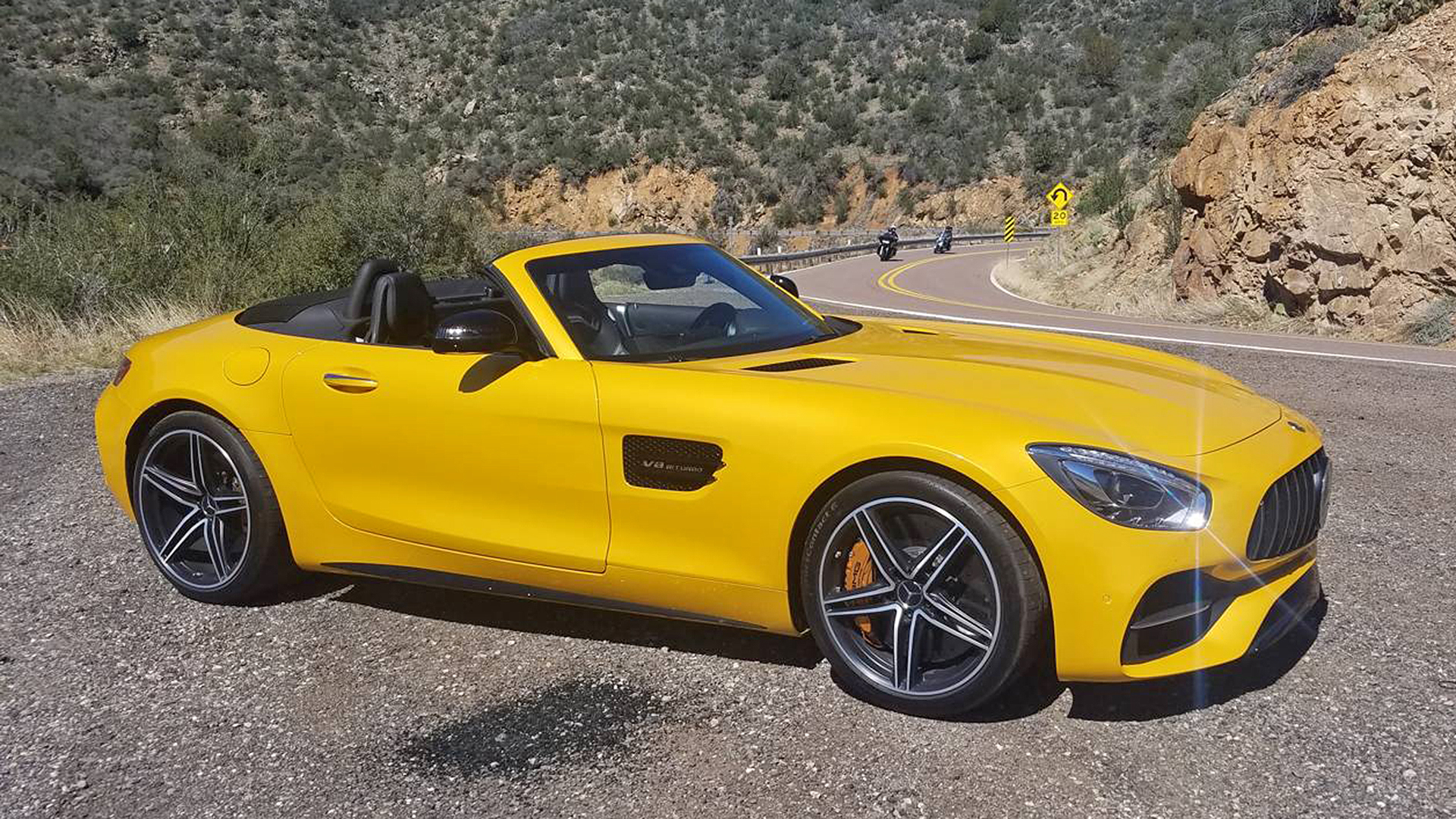Mercedes made a major sports-car splash in 2016 with its AMG GT coupe, a Porsche 911 fighter with style and speed to burn. Sun worshippers will have to wait a bit for the new convertible version—the 2018 AMG GT C Roadster goes on sale this fall—but we slapped on the SPF 50 and got a burning early dose of the Benz on a run from Phoenix to the famous Red Rocks of Sedona. I actually got doubly burned, nailed for speeding by a sheriff in the Sonoran desert. But following AMG excitation, plus a stiff citation, here are my seven first impressions of this desert roadrunner:
1. Exhibit A (for AMG) in the evolution of the convertible
Like clean-sheet convertibles from McLaren, Ferrari, and Lamborghini, the Mercedes renders the old stereotype obsolete: Unless you plan to put a roll cage in the AMG (yeah, right), there’s nothing the coupe can do that the convertible can’t match. Differences in weight and structural rigidity are negligible; with its triple-layer fabric soft top and a magnesium/aluminum/steel roof structure, the AMG GT C Roadster adds just 77 pounds to the coupe.
2. Exhibit B (for Biturbo) in the evolution of the convertible
The base-model AMG GT Roadster gets an ample 469 horsepower from Mercedes’ stonking 4.0-liter biturbo V8. The GT C version cranks that to an even 550 horses, good for a 3.7-second rip to 60 miles per hour and a 196-mph top speed. That’s just 2 mph slower up top than the ‘Ring-storming, 2018 AMG GT R Coupe.

3. Similarities between Roadster and Coupe don’t end there
For deep-pocketed AMG buyers who’ve become accustomed to big leaps in price, the GT C version may be worth the roughly $160,000 base fare—at least, compared to maybe $125,000 for the standard Roadster. Only the GT C shares three key elements with the GT R Coupe: A dramatically flared rear end with a 2.25-inch wider axle track; performance-boosting active rear steering that can move the rear wheels up to 1.5 degrees; and a sophisticated electronic limited-slip rear differential.
4. The Roadster puts AMG’s best face forward
The Roadster introduced us to the GT’s boldly redesigned front end, which the 2018 GT Coupes will adopt as well. A so-called “Panamerica” grill—no, not “Panamera,” that would be tacky—integrates thick vertical slats. Behind the metal-mouthed grille is the Airpanel, a set of 14 active louvers that can open or shutter in less than one second to reduce drag or boost engine cooling.

5. Mercedes, meet Camaro. You’ve got something in common.
The AMG’s convertible treatment solves its literal blind spot: Top duly dropped, you can actually see out of the damn thing. As with Chevy’s pony car, the AMG GT Coupe’s neck-high beltline, stingy glass area, and steeply raked windshield are its biggest downer.
6. It’s like strapping on a German rocket. Or did I say that wrong?
Steering, sensation, a Wagnerian crescendo of sound: This convertible does it all. Style, too: The Solarbeam Yellow paint, a dead ringer for Michigan Wolverine maize, remains the car’s signature. But whichever color you choose, the Mercedes makes a far-bigger impression on innocent bystanders than a Porsche 911. In other words, people go apeshit over the AMG.
7. You want practical? Buy a Porsche.
The Mercedes delivers near-supercar style and performance, but it’s closer to a Miata in terms of practicality—especially the convertible, whose trunk cries “uncle” after the addition of two weekend bags. Footwells are narrow, and fore-and-aft seat travel is limited. There’s not a whit of storage behind the seats, not even a net or hinged cubby as in the Mazda.
Watch Lawrence Ulrich hit the gas in the new Mercedes-AMG GT C Roadster below.
